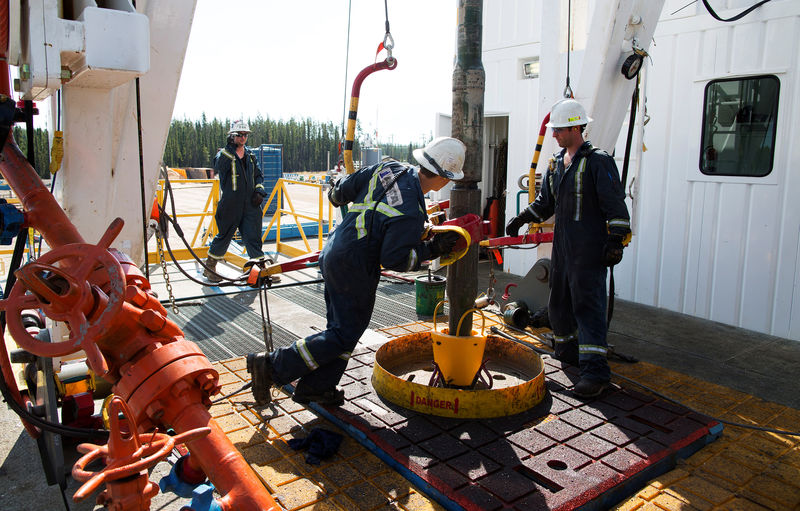Crispr Therapeutics shares tumble after significant earnings miss
By Gina Lee
Investing.com – Oil was up Thursday morning in Asia, with investors surprised by a build in U.S. crude oil supply, but still supported by ongoing tensions in the Middle East.
Brent oil futures were up 0.24% to $70.565by 1:43 PM ET (5:43 AM GMT) and WTI futures gained 0.26% to $68.33. Both Brent and WTI futures fell by more than $2 a barrel on Wednesday.
U.S. crude oil supply data from the U.S. Energy Information Administration on Wednesday showed a build of 3.636 million barrels in the week to Jul. 30. Forecasts prepared by Investing.com had predicted a 3.102-million-barrel draw, while a 4.089-million-barrel draw was recorded during the previous week.
Crude oil supply data from the American Petroleum Institute released the day before showed a draw of 879,000 barrels.
Some investors, though, focused on the bigger-than-forecast draw of 5.292 million barrels in gasoline inventories.
"The fall in U.S. gasoline stockpiles to the lowest level since November 2020 suggests that fuel demand conditions in the U.S. are still quite resilient," Commonwealth Bank of Australia (OTC:CMWAY) analysts said in a note.
Brent oil prices are now expected to rise to $85 a barrel by the fourth quarter as oil demand outpaces supply growth, the note added.
The latest tensions in the Middle East gave the black liquid a boost, however.
"With tensions brewing amongst Iran and world powers over last week's drone attack, it seems nuclear deal talks will be lengthy and unlikely to provide imminent sanction relief for Iran," OANDA senior analyst Edward Moya told Reuters.
The U.S. State Department said on Wednesday that it believed Iran was behind the hijack of the Panama-flagged Asphalt Princess tanker in the Gulf of Oman that look place last week, but that this could not be confirmed. Iran, however, had denied responsibility.
Elsewhere in the region, Israeli aircraft struck what the country's military described as rocket launch sites in south Lebanon earlier in the day, as a response to earlier projectile fire towards Israel.
Investors are also focused on the weather, with the risks of potential supply disruptions amid a forecast for more storms in the Atlantic also supporting prices, said Moya. The National Oceanic and Atmospheric Administration on Wednesday revised upward its outlook for the 2021 Atlantic hurricane season, with an estimated 65% chance of an above-normal season and between three to five major hurricanes.
Capping oil’s gains, however, was a rise in daily COVID-19 cases that has prompted restrictive measures in China, the world’s largest fuel importer, and dampened the fuel demand outlook. The number of COVID-19 cases globally has also passed the 200 million mark as of Aug. 5, according to Johns Hopkins University data.
